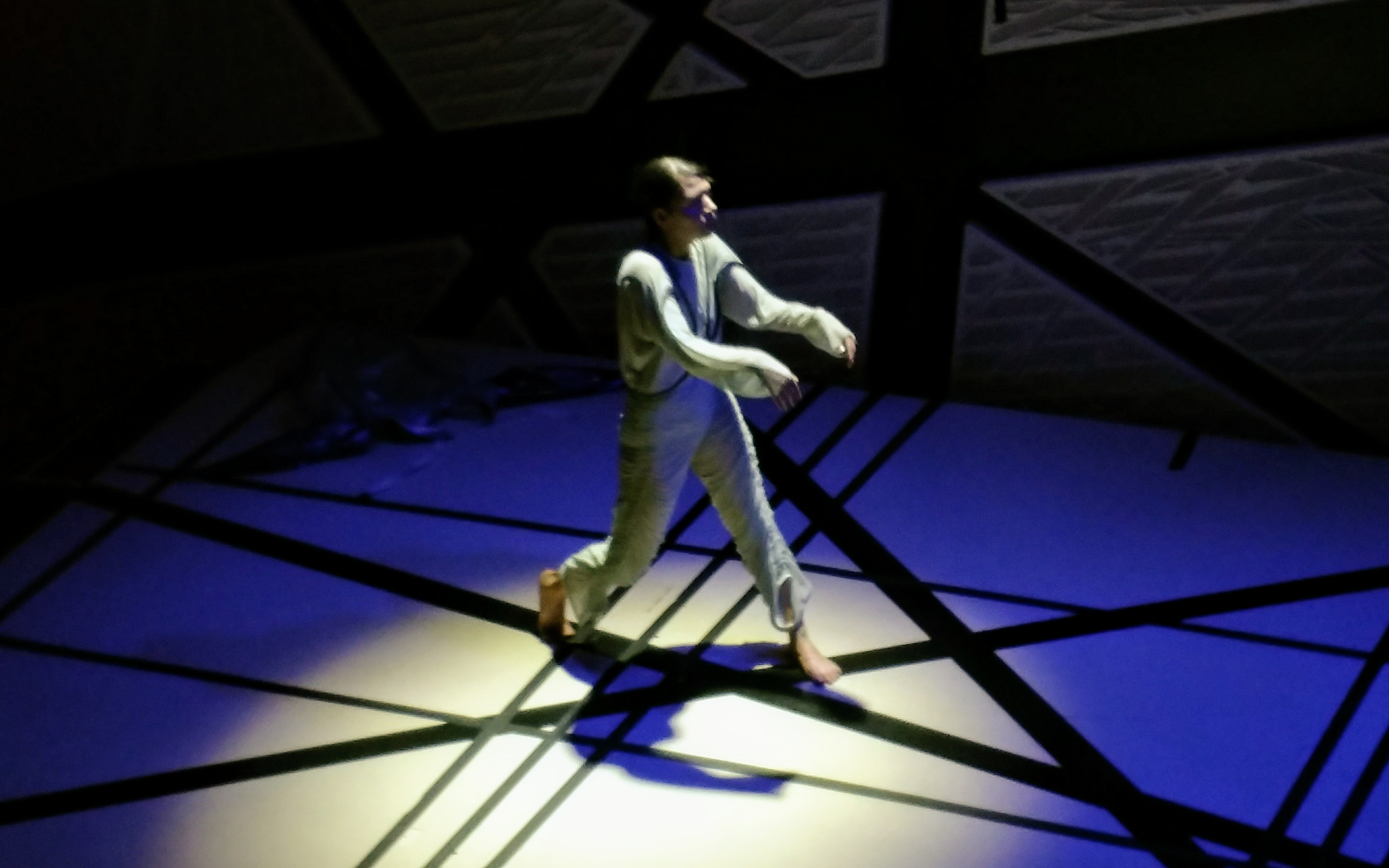Kianí Del Valle emerges, in the first part of Catacoustic Flesh, like a pupa discarding the chrysalis or a crab molting its shell. But there is something odd in the armature: it is more plasticine than organic and has a metallic sheen. It is seamed and riveted and too steely to let loose a thing of flesh. When at last the dancer sheds it, she has in her joints the mechanics of her origin, as though the self within is not the ghost in the machine, but the reverse.
Catacoustic Flesh premiered to the world on Saturday at National Sawdust in Brooklyn, billed as a dance that “explores the body as a sound instrument” and “questions the role of the unconscious in the layers that make up the self.” It is from those layers, as they peel away and grow over again, that Del Valle extracts a living being, uncertain what it is but determined be one. The self is a thing, in Catacoustic Flesh, to be found and overcome, a generative essence by which the dancer refuses to be bound.
Leo Luchini’s music unites with her, or she unites with it, in a continual becoming. Her soles strike the floor like the swatter the fly, and the footfalls loop back to the sound. The plain elegance of her costume, by Bouyez, exposes a body, alternately taut and liquid, which seeks without finding or finds only to lose. More than once her muscles loosen, then something mechanical resurges, and they are wound back in. To say that she has joints precise as rachets is more than metaphoric. The machine is incipient in the body, the metal in the flesh. That her body looks and behaves so, and that she seems to discover rather than know before, suggests a testing of identity and the mechanisms that limit and define it.
In about a half-hour, Catacoustic Flesh builds through at least three successive phases, delineated by both the lighting (for which I cannot find a credit) and the progress of the movement. The first – molting – phase goes from a dim wash to a violet hue; in the second, Del Valle is prone in red light; in the final, she is increasingly liberated in a world of blue and steely white. In transition, she dances in a white-lit square. I’m not sure she has found the way to conclude the piece, but it may be that something too definitive would belie the act of becoming, which surely continues.
Something in Catacoustic Flesh reminded me of Molissa Fenley premiering State of Darkness, her solo to Rite of Spring, three decades ago in Durham. It has a similar primal bravery, refusal of physical limit, and sense of music made flesh. Catacoustic Flesh is a work of fervid solo artistry from a dancer of uncommon power and should endure as long in the memory.
For more on Kianí Del Valle, click here. Go to National Sawdust for more on that venue.
